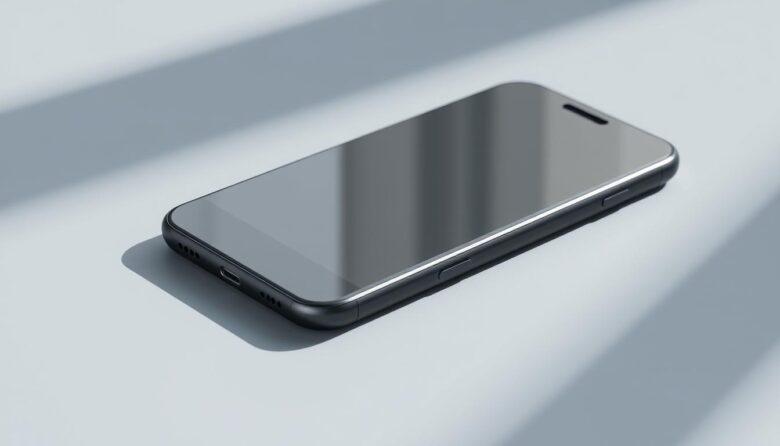Your smartphone might hold a hidden superpower you’ve overlooked. Many Android devices include a built-in infrared blaster, turning them into versatile tools for managing household electronics. This hardware feature, often found near the top edge of the phone, emits signals that interact with TVs, sound systems, and even air conditioners.
Unlike Wi-Fi-dependent solutions, infrared technology works without internet access. This makes it ideal for controlling older appliances or devices in areas with spotty connectivity. The blaster mimics traditional remote controls, sending precise commands through invisible light waves.
Modern users benefit from consolidating multiple remotes into one pocket-sized device. Whether adjusting volume or changing thermostat settings, your handheld becomes a universal command center. This functionality shines in scenarios where quick adjustments matter, like silencing a noisy TV during calls.
While smart home gadgets dominate conversations, infrared remains relevant. It bridges the gap between legacy electronics and today’s connected ecosystems. Manufacturers continue integrating blasters in select models, recognizing their value for practical, everyday use.
Understanding Infrared Blasters and Their Role in Modern Phones
Hidden within your device lies a technology that revolutionized home control. Infrared blasters transformed how we interact with electronics, evolving from bulky remotes to sleek smartphone integrations.
History and Evolution of Infrared Technology
Early remote controls used basic light pulses in the 1970s. These required direct line-of-sight and fresh batteries. By the 2000s, manufacturers began embedding infrared transmitters into handheld devices.
Modern smartphones refined this approach. Their blasters send stronger signals than traditional remotes, reaching devices up to 30 feet away. This eliminated the “battery shuffle” common with older clickers.
Benefits Over Conventional Remote Controls
Infrared blasters consolidate multiple controllers into one device. Users manage TVs, soundbars, and climate systems through universal control apps. No more digging through couch cushions for lost remotes.
These systems work without Wi-Fi, ideal for older appliances or rural homes. Advanced models even adjust security cameras or projector screens. Backward compatibility ensures your grandmother’s 1990s AC unit still responds to modern commands.
IR Sensor Phone Tricks: Unlocking Device Control
Transforming your Android device into a universal remote begins with the right tools. Most modern handsets come pre-loaded with manufacturer-specific apps like Xiaomi’s “Mi Remote Controller.” For broader compatibility, third-party remote control apps like Twinone Universal TV Remote or SURE Universal Remote expand your command options.
Initial Setup Essentials
Start by downloading your preferred app from trusted sources. Open the application and grant necessary permissions. The interface typically prompts you to select device categories like TVs or air conditioners first.
Configuring Your Control Hub
Enter your appliance’s brand and model when prompted. Most apps contain extensive databases that auto-configure button layouts. If your device isn’t listed, use the manual programming feature. Point your original remote at the phone’s infrared emitter to capture signal patterns.
Advanced users can create custom button maps for unique functions. Successful pairing triggers immediate response from your appliance, confirming the connection. This step-by-step process works for multiple devices, letting you manage entire entertainment systems through one interface.
Identifying Phones Equipped with IR Blasters
Modern smartphones blend cutting-edge features with practical tools, and infrared capabilities remain a standout for device control enthusiasts. While not universal, several manufacturers continue integrating this hardware in new releases, offering users a streamlined way to manage home electronics.
Current Market Leaders in Infrared Technology
Xiaomi dominates the infrared space with models like the flagship 14 Ultra and budget-friendly Redmi Note 14 Pro+ 5G. Their devices span multiple price points, making blaster technology accessible to various users. The POCO X7 and F4 GT cater to gamers needing quick appliance adjustments during sessions.
Other notable options include the OnePlus 13R for premium performance and Oppo’s Find X6 Pro for photography enthusiasts. Brands like Vivo and iQOO offer specialized models such as the X80 Pro and Neo 7, balancing infrared functionality with high refresh rate displays.
To verify if your device contains this feature, inspect the top edge for a tiny LED-like component. Consult manufacturer specifications or product manuals when uncertain. Some regional models may require importing, so check local availability before purchasing.
As smart home integration grows, these blaster-equipped phones bridge traditional electronics with modern convenience. Their persistence in flagship and budget lines confirms ongoing consumer demand for practical, offline control solutions.
Using IR Blasters in Everyday Situations
Streamlining daily routines becomes effortless when your handheld device manages multiple electronics. Infrared technology transforms ordinary interactions with household systems into seamless experiences, eliminating the need for specialized hardware.
Controlling Home Appliances and Smart TVs
Modern smart TVs and classic entertainment systems respond instantly to infrared commands. Adjust volume, switch inputs, or power down devices across rooms using one interface. Climate control becomes equally intuitive—raise your air conditioner’s temperature from the couch during movie nights.
Travelers appreciate this functionality in hotels lacking original remotes. A quick app setup lets you control room amenities like TVs and cooling units. This adaptability extends to older appliances, granting smart capabilities without costly upgrades.
Replacing Multiple Remote Controllers With Your Phone
Consolidating six remotes into one device declutters living spaces and simplifies operations. Customizable layouts in universal remote apps group frequently used commands for quick access. Lose the coffee table juggling act during family gatherings.
Advanced setups even manage projectors or security cameras. Infrared’s offline reliability ensures consistent performance in basements or rural homes with weak Wi-Fi. This approach bridges generational tech gaps while maintaining simplicity.
DIY IR Blaster Projects and Custom Setups
Building your own infrared transmitter unlocks control possibilities beyond factory settings. This hands-on approach suits devices lacking built-in capabilities or users seeking tailored solutions. Custom setups let you extend signal range and create specialized command sequences.
Essential Parts and Tools for DIY Projects
Start with a 3.5mm aux cable and two infrared LEDs. The series connection method boosts output power – link LED 1’s anode to LED 2’s cathode. Heat-shrink tubing protects joints, while a soldering iron ensures secure connections. Optional hot glue adds durability.
Step-by-Step Assembly and Testing Guide
Strip the aux cable’s tip and ring wires. Solder LEDs in series, then insulate with tubing. Download ZAZA Remote and activate audio reversal in settings. Increase macro key gaps to 1000ms for reliable signal transmission.
Test your blaster by pointing LEDs at appliances. Successful commands confirm proper assembly. Note that audio driver quality affects performance – premium phones often achieve better range than budget models.
While DIY projects offer flexibility, commercial alternatives provide more consistency. Use this guide when needing quick fixes or experimenting with custom infrared applications.
Advantages of IR Blasters in Low-Connectivity Environments
When networks fail, your device becomes the ultimate backup controller. Infrared technology thrives where Wi-Fi and mobile data falter, offering control without internet dependency. This independence proves vital in rural cabins, storm-prone areas, or buildings with thick concrete walls that block signals.
Traditional smart systems collapse during outages, but blasters maintain functionality through direct light-based communication. Users adjust thermostats during winter power failures or switch projector inputs in basement theaters with spotty routers. No cloud servers or app updates required – just point and command.
Operating Without Wi-Fi or Mobile Data
Infrared excels in three key scenarios. First: remote vacation homes where network access costs extra. Second: emergency situations requiring immediate appliance control. Third: managing older devices never designed for smart connectivity.
Energy efficiency adds another layer of practicality. Unlike Wi-Fi-dependent tools draining phone batteries, blasters use minimal power for brief signal bursts. This approach conserves energy while keeping essential functions accessible at all times.
Travelers particularly benefit from this reliability. Imagine landing in a foreign hotel with broken remotes – your handheld becomes the universal solution. No language barriers or setup hassles, just instant control without relying on local infrastructure.
Optimizing Your IR Blaster Experience on Android Devices
Maximize your Android’s hidden potential with these streamlined strategies. Proper setup and maintenance ensure your device becomes a reliable hub for managing household electronics.
App Recommendations and Customization Tips
Start with top control apps like Mi Remote or Peel Smart Remote from trusted app stores. These tools offer preset codes for thousands of devices. Customize layouts by rearranging buttons or creating macros for multi-step commands.
Enable widget support for quick access without opening apps. Use screen space efficiently by hiding rarely used functions. Always make sure apps match your Android phone model for optimal signal strength.
Maintenance and Troubleshooting Strategies
Clean the blaster’s infrared port monthly with compressed air. Dust buildup can weaken signal range. If appliances stop responding, check app updates or reboot your phone remote.
For persistent issues, test with different control apps to isolate software problems. Keep a backup remote handy during troubleshooting. Regularly make sure your Android phone’s OS supports newer app versions.



